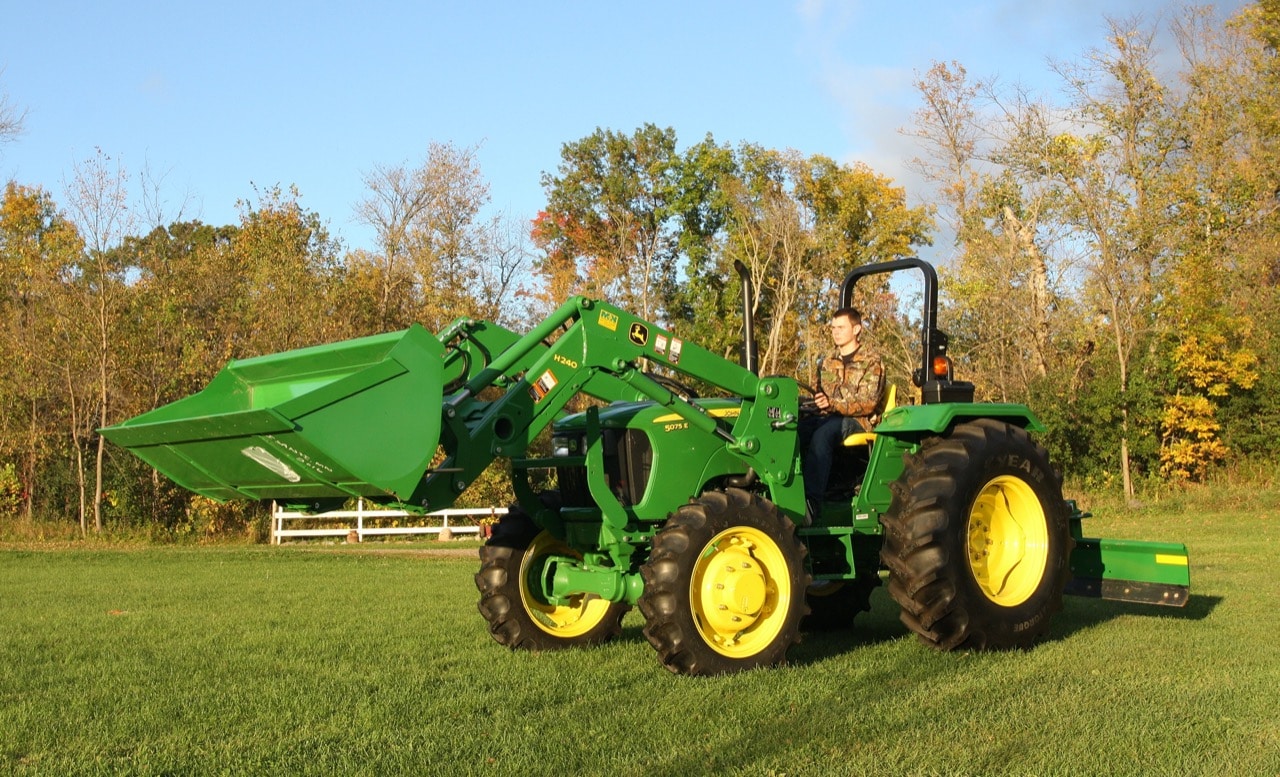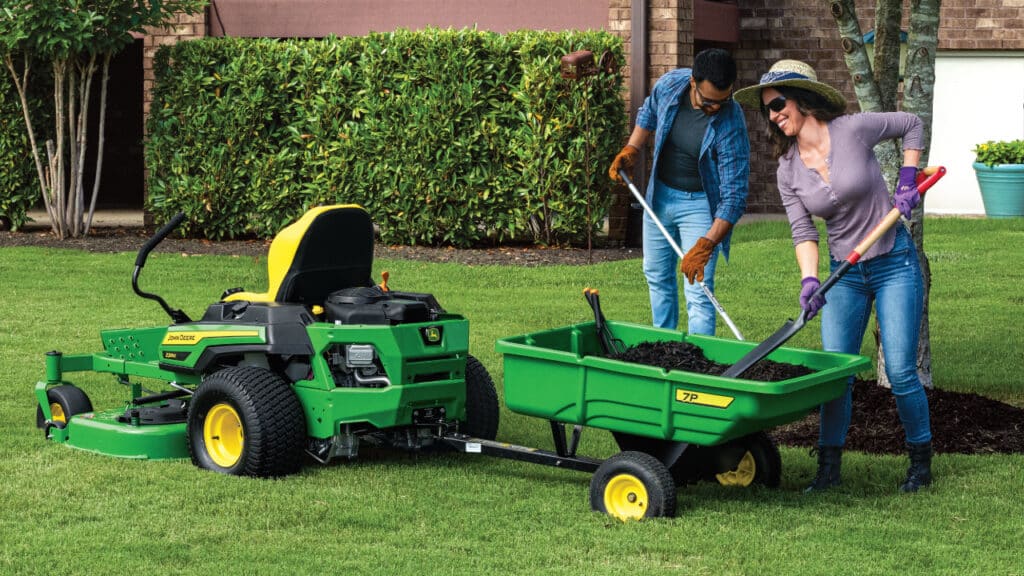
John Deere tractors are iconic machines often associated with agriculture and America’s hard-working farmers. These workhorses aren’t just for the farm, however. Whether you’re nurturing food plots, managing wildlife habitats or working around the yard, a tractor can make life infinitely easier.
Given the many options available on the market, choosing a tractor that best fits your needs can feel intimidating. But the tractor selection process needn’t be painful. In fact, if you follow these guidelines, your quest for the perfect machine can be downright enjoyable.
New or Used?
One of the first decisions you’ll face is whether to buy a new or used tractor. Both options have benefits and trade-offs, so in the end the best choice depends on your needs and budget.
Naturally, new tractors cost more. But they generally offer newer technology, more features, and higher performance. So you can do more work in less time, often on less fuel.

New and well-maintained used tractors made in recent years are also less prone to costly breakdowns than older machinery. Repair costs are the hidden price of buying used, so don’t forget to factor them in.
New tractors also come with a warranty. Be forewarned, not all warranties are created equal. Some are short and don’t cover much. On the positive end of the spectrum, John Deere provides one of the best warranties in the business, plus extended peace of mind and protection from unexpected repair costs through the PowerGard Protection Plan.
As a bonus, new tractors purchased through dealers like Minnesota Equipment often offer attractive discounts and financing options such as zero percent down for 48 to 60 months, depending on the machine.
Finally, new and late-model used tractors feature the latest safety equipment, such as a Rollover Protective Structure, seat belt, guards, shields and other accident prevention features not found on older machinery.
Used Tractor Buying Tips
A well-maintained used tractor can still be a great investment and perform a lot of hard work. Just keep in mind that some older tractors are limited to pulling implements hooked to the drawbar and using the power takeoff to operate attachments such as mowers.
Newer tractors have more advanced systems that can handle a wide variety of attachments—so think about the type of work you want to do and the attachments you’d like to use to get these chores done.
Things to look for include: live PTO (power take-off), live hydraulics, three-point hitch, one or more hydraulic outlets, and power steering—especially if you plan to use a front-end loader.

“Live PTO and hydraulics” mean the power takeoff shaft and hydraulic system aren’t affected by the transmission clutch. So you can start and stop the PTO or raise and lower the hydraulics regardless of the clutch position. A three-point hitch allows you to hook up to a multitude of attachments, expanding your equipment options far beyond those that attach to the drawbar.
Once you find a used tractor for serious consideration, make sure everything is in working order. For example, the tractor should be easy to start, run well when hot, charge the electrical system, shift smoothly, have functional brakes, steer well, have good tires and get good traction.
Don’t forget to check the oil. After the engine has warmed up, stop the engine and check the oil for foaming or the presence of water. Also, look for fluids seeping out of the head gasket, and watch for structural cracks in all cast and steel components. Take a hard look at the exhaust, too. Blue smoke indicates the engine is burning oil.
Pay Attention
Listen to what the tractor is telling you, too. Does the engine make “clunking” noises? Ticking from the top of the engine may call for a simple valve adjustment. But a deep thunk from the midsection or bottom of the engine could be a red flag that more expensive repairs to the crankshaft, bearings or piston rods are on the horizon.
While you’re at it, be sure the hydraulic system is in working order. Check the full range of the rams by extending them with a load. Let the load sit in the hold position, to be sure there is no leakdown. Also listen for chattering noises from the hydraulic pump, which indicates the pump isn’t getting a sufficient flow of fluid.
Buy The Right Size Tractor
Choosing the right size tractor for your needs is another important step. Consider the types of work you plan to use it for, as well as the various attachments you’d like to pair with it.

In general, using a tractor too small for the job can be hazardous to your health—and potentially damaging to the machine. On the other hand, using a tractor too large for the task burns more fuel, may be harder to maneuver in tight quarters and can cause unintended consequences such as soil compaction in food plots and gardens. Here, too, your local dealer can help you find a perfect fit for the work you plan to do.
Know The Seller
Buying from a reputable dealer like Minnesota Equipment is a great way to remove the stress and risk from the tractor-buying process.
For starters, their experienced sales staff can help you choose a tractor that’s right for you. If you decide to purchase a used tractor, you can rest assured the service department has given the machine a thorough inspection and performed any required maintenance. And whether you opt for new or used, the dealership will be there to assist with questions, parts, and service for years to come.


 MyME
MyME



